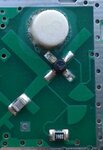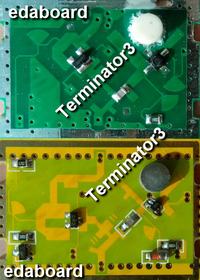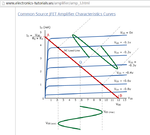ferdem
Full Member level 2


Hi friends!
Does anybody recognize the component in the picture? I guess it is a MMIC amplifier but I have no idea about its manufacturer. I could not read its label, it is like L 9550 or L 9S50... search with these words did not make me find something related.
The circuit is part of the low cost microwave motion detector sold around $4. The operating frequency is 10.525 GHz and I guess the amplifier there should provide 10 dB or higher gain. It is active part of the DRO, it compensates resonator loss and sustains oscillation, right? What do you expect its gain? If I want to replace it with a different MMIC, what would be the selection criterion? Gain, phase at op. freq etc.?
It is quite interesting to me to see amplification at X-band in such a low cost module.






